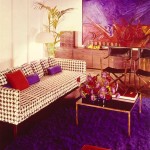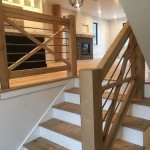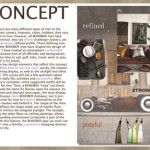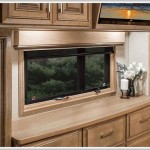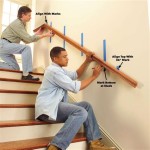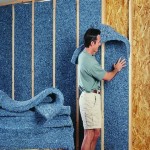Words to Describe Texture in Interior Designing
Texture plays a crucial role in interior design, adding depth, visual interest, and tactile sensations to a space. Effectively describing texture is essential for communicating design concepts to clients, collaborators, and contractors. A well-defined vocabulary allows for precise articulation of the intended aesthetic and functional qualities of a surface or material. This article explores a range of words used to describe texture in interior design, categorized by type and offering examples of their application.
Tactile Texture: Describing Feel
Tactile texture, also known as actual texture, refers to the way a surface physically feels to the touch. This is perhaps the most مباشر texture, relying on our sense of touch to perceive qualities like smoothness, roughness, softness, and hardness. The words used to describe tactile texture are often direct and descriptive, evoking a clear understanding of the physical sensation.
Smooth: This describes a surface that is free from irregularities, offering minimal resistance to the touch. Examples include polished marble countertops, lacquered wood furniture, and sleek glass surfaces. Smooth textures often create a sense of elegance, modernity, and cleanliness. A designer might specify "smooth, high-gloss cabinets" to create a contemporary kitchen aesthetic.
Rough: The opposite of smooth, rough textures have perceptible irregularities and offer a degree of resistance to the touch. Think of exposed brick walls, unfinished wood beams, or heavily textured fabrics. Rough textures introduce a sense of rusticity, warmth, and sometimes even a raw, industrial feel. Describing a wall as having a "rough, exposed aggregate finish" clearly communicates its tactile quality.
Soft: This term denotes a surface that yields easily to pressure, offering a cushioning or comforting sensation. Examples include plush carpets, velvet upholstery, and down-filled cushions. Soft textures contribute to a sense of relaxation, comfort, and luxury. A designer might recommend "soft, chenille throws" to enhance the comfort of a living room.
Hard: Hard textures resist pressure and offer little to no give. Examples include stone flooring, metal accents, and ceramic tiles. Hard textures are often associated with durability, formality, and a sense of permanence. Specifying "hard, porcelain tiles" indicates a need for a resilient and easily maintained flooring solution.
Bumpy: This describes a surface with numerous raised areas, creating an uneven texture. Examples include cobblestone paths, heavily textured wallpaper, and some types of stucco. Bumpy textures add visual interest and can contribute to a rustic or handcrafted feel. A designer might mention a "bumpy, hand-troweled plaster wall finish" to create a unique and artisanal effect.
Coarse: Similar to rough, but often used to describe materials with larger irregularities. Think burlap fabric, heavily grained wood, or some types of natural stone. Coarse textures introduce a sense of earthiness and informality. Using "coarse linen curtains" would suggest a relaxed and natural aesthetic.
Fine: Denotes a delicate and subtle texture, with small and closely spaced irregularities. Examples include finely woven silk, smooth leather, and polished plaster. Fine textures often contribute to a sense of sophistication and refinement. A description of "fine, Italian leather upholstery" conveys a sense of luxury and quality.
Grippy: Describes a surface that provides good traction, preventing slipping. This is important for flooring in areas prone to moisture, such as bathrooms and kitchens. Grippy textures can be achieved through the use of specialized coatings or textured materials. Specifying "grippy, non-slip tiles" is crucial for bathroom safety.
Visual Texture: Describing Appearance
Visual texture, also known as simulated texture, refers to the illusion of texture created through patterns, colors, and light. While the surface might be physically smooth, the way it appears suggests tactile qualities. Describing visual texture relies on evocative language that captures the perceived depth and dimension.
Patterned: This is a broad term denoting a surface with a repeating design. The specific pattern can significantly influence the perceived texture. Examples include floral wallpaper, geometric rugs, and striped fabrics. The pattern itself creates a visual rhythm and depth. Describing a wall as having "bold, patterned wallpaper" conveys its visual complexity.
Mottled: This describes a surface with irregular patches of color or shading, creating a variegated appearance. Examples include marble countertops, aged wood finishes, and some types of paint effects. Mottled textures add visual interest and depth, suggesting age and character. A designer might specify a "mottled, antique mirror finish" to create a sense of history.
Grainy: This describes a surface with a visible grain, typically associated with wood or stone. The grain pattern adds visual texture and can influence the overall aesthetic. Examples include oak flooring, granite countertops, and wood veneer furniture. The direction and prominence of the grain can be emphasized in the design. Describing a surface as having a "pronounced, vertical grain" highlights its natural texture.
Woven: This describes a surface with a visible interlacing pattern, characteristic of fabrics and textiles. The weave can be tight or loose, creating different visual textures. Examples include linen curtains, wicker baskets, and knitted throws. Woven textures add warmth and visual interest. Specifying "loosely woven cotton curtains" creates a casual and relaxed atmosphere.
Embossed: This describes a surface with a raised pattern, creating a three-dimensional effect. Examples include embossed wallpaper, tooled leather, and some types of metalwork. Embossed textures add a sense of luxury and sophistication. Using "embossed velvet upholstery" would suggest a formal and elegant aesthetic.
Iridescent: This describes a surface that displays a shimmering, rainbow-like effect due to the interference of light. Examples include mother-of-pearl, some types of glass, and certain metallic finishes. Iridescent textures add a touch of glamour and visual intrigue. Describing a surface as having an "iridescent, pearlescent finish" highlights its unique optical properties.
Striated: This describes a surface marked with parallel lines or grooves, creating a linear visual texture. Examples include fluted columns, brushed metal, and some types of stone. Striated textures add a sense of movement and direction. Specifying "striated, textured glass panels" creates visual interest and privacy.
Distressed: This describes a surface that has been intentionally aged or weathered, creating a worn and imperfect appearance. Examples include distressed wood furniture, chipped paint, and rusted metal. Distressed textures add character and a sense of history. Using "distressed leather armchairs" contributes to a vintage or industrial aesthetic.
Describing the Degree and Quality of Texture
Beyond identifying the type of texture, it is crucial to describe its degree and quality. This involves using adjectives that further refine the sensory experience and convey the intended design intent with greater precision.
Subtle: Denotes a texture that is barely perceptible, adding a gentle visual or tactile interest without being overwhelming. A subtle texture might be used to create a calming and understated effect. For instance, "subtle, eggshell-textured paint" adds depth to a wall without being visually distracting.
Prominent: Describes a texture that is highly noticeable and visually dominant. A prominent texture can become a focal point in the design. For example, "prominent, raised-relief wallpaper" creates a bold and impactful statement.
Heavy: Suggests a texture that is dense and substantial, both visually and tactually. A heavy texture can add warmth and richness to a space. An example is "heavy, thickly woven tapestry" which provides a sense of weight and luxury.
Light: Denotes a texture that is delicate and airy, imparting a sense of spaciousness and lightness. Light textures are often used in minimalist designs. An example is "light, sheer linen curtains" which allow natural light to filter through while adding a subtle texture.
Warm: Describes a texture that evokes feelings of comfort, coziness, and intimacy. Warm textures often involve soft and natural materials. Examples include "warm, wool rugs" and "warm, velvet cushions."
Cool: Suggests a texture that conveys feelings of freshness, cleanliness, and modernity. Cool textures often involve smooth and reflective materials. Examples include "cool, polished concrete floors" and "cool, stainless steel accents."
Refined: Denotes a texture that is elegant, sophisticated, and meticulously crafted. Refined textures often involve high-quality materials and precise detailing. An example is "refined, silk damask wallpaper" which adds a touch of luxury and elegance.
Rustic: Describes a texture that is rough, natural, and unrefined, evoking a sense of simplicity and authenticity. Rustic textures often involve natural materials and handcrafted details. Examples include "rustic, reclaimed wood furniture" and "rustic, exposed brick walls."
By using a comprehensive vocabulary to describe texture, interior designers can effectively communicate their vision, ensuring that the intended aesthetic and functional qualities are accurately conveyed and successfully implemented in the final design.

Top Interior Design Terms To Know Dictionary

How To Use Texture In Interior Design Dm

The Importance Of Using Texture In Interior Design

Discussing The 7 Elements Of Interior Design

Interior Design Styles 101 The Ultimate Guide To Decorating In 2025 Decorilla

Interior Design Styles 101 The Ultimate Guide To Decorating In 2025 Decorilla

Interior Design Styles 101 The Ultimate Guide To Decorating In 2025 Decorilla

Interior Design Styles 101 The Ultimate Guide To Decorating In 2025 Decorilla

Stunning Royal Texture Paint Designs For Hall In 2025

Interior Design Styles 101 The Ultimate Guide To Decorating In 2025 Decorilla
Related Posts

